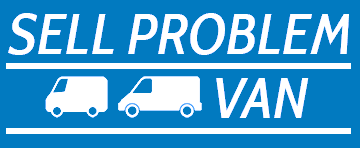So you’ve been involved in an accident. Your car’s been damaged, your insurance has declared it a Cat D write off and you’ve been left with a long list of expensive repairs. What do you do?
A lot of Cat D vehicle owners decide that, in the long run, the expenses will be worth it – after all, they need a car and, unable to afford the cost of a new one, making the repairs seems like the only available option. But once the repairs have been made, and you’ve gone through the vehicle identify verification to get your car back on the road, what happens when you then want to sell your Cat D car?
Cat D – a whole lot of confusion
Insurers give damaged cars the Cat D classification all the time. It’s extremely common for cars to be damaged where the cost of repair doesn’t exceed the value of the car (which is the definition of ‘a Cat D car’). Just search on eBay or Autotrader and you’ll uncover hundreds of sellers trying to get rid of their Cat D damaged car – and most of them without any luck.
Insurance write off categories can be tricky to understand, and most motorists aren’t prepared to deal with the consequences of having a Cat D vehicle. Similarly, those in the market for a new vehicle are often confused about the Cat C and Cat D labels, but they’re tempted by the too-good-to-be-true prices. Car blogs are full of buyers asking for advice on whether or not to buy accident damaged cars and, in most cases, the passionate and conflicting replies are enough to scare these potential buyers away.
Documentation, documentation, documentation
If you do decided to repair your damaged car for sale (despite the reduced market), it’s worth going to some length to document the repair process as much as you can, and be prepared to provide any buyer with detailed information about exactly who undertook the repairs. Sometimes sales can be made when professional and reputable body shops are used, while vehicles repaired by a DIY repairer will sit gathering dust for years.
Unfortunately, no matter how careful you are – even if you take all the correct steps in repairing, documenting and arranging for all necessary vehicle checks – either you (if you choose to keep the car) or the buyer of your car may still find themselves at a loss, with some motorists unable to get insurance after their insurance providers fail to cover repaired Cat D damaged cars.
Even if they can obtain the insurance they need to drive their new cars, those that buy Cat D vehicles may realise they’ve made a big mistake when they try to sell the car a few year down the line and find that there’s no market. Most savvy car buyers know this, that’s why the majority stay well clear of accident damaged cars that have been repaired, and tell others to do the same.
Repairs the only option?
But don’t feel obligated to make the repairs the insurance company deems necessary if you find yourself the owner of a Cat D car. If you’re dependent on your vehicle then you can save yourself a lot of time and a lot of hassle by selling your car for salvage. Unlike the fluctuating and difficult market for damaged cars, scrapping remains a simple and sensible choice.
Contact us at WeBuyAnyDamagedCar for further details of how to quickly get rid of that damaged or broken car. We’ll help you get the money you need to get back on the roads as quickly as possible.

